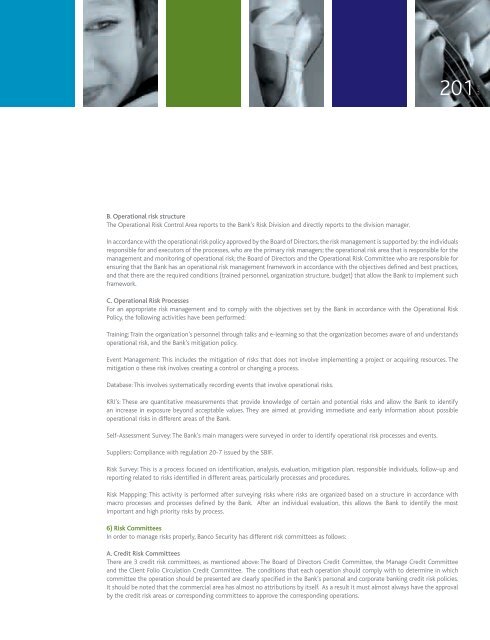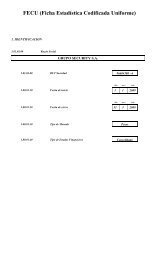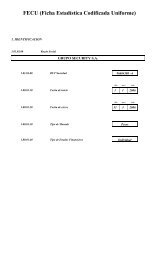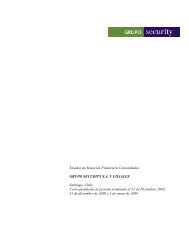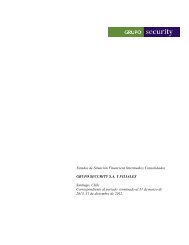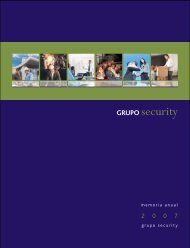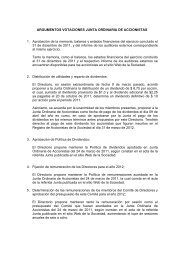PA - Banco Security
PA - Banco Security
PA - Banco Security
You also want an ePaper? Increase the reach of your titles
YUMPU automatically turns print PDFs into web optimized ePapers that Google loves.
201<br />
<strong>PA</strong>GE<br />
B. Operational risk structure<br />
The Operational Risk Control Area reports to the Bank’s Risk Division and directly reports to the division manager.<br />
In accordance with the operational risk policy approved by the Board of Directors, the risk management is supported by: the individuals<br />
responsible for and executors of the processes, who are the primary risk managers; the operational risk area that is responsible for the<br />
management and monitoring of operational risk; the Board of Directors and the Operational Risk Committee who are responsible for<br />
ensuring that the Bank has an operational risk management framework in accordance with the objectives defined and best practices,<br />
and that there are the required conditions (trained personnel, organization structure, budget) that allow the Bank to implement such<br />
framework.<br />
C. Operational Risk Processes<br />
For an appropriate risk management and to comply with the objectives set by the Bank in accordance with the Operational Risk<br />
Policy, the following activities have been performed:<br />
Training: Train the organization’s personnel through talks and e-learning so that the organization becomes aware of and understands<br />
operational risk, and the Bank’s mitigation policy.<br />
Event Management: This includes the mitigation of risks that does not involve implementing a project or acquiring resources. The<br />
mitigation o these risk involves creating a control or changing a process.<br />
Database: This involves systematically recording events that involve operational risks.<br />
KRI’s: These are quantitative measurements that provide knowledge of certain and potential risks and allow the Bank to identify<br />
an increase in exposure beyond acceptable values. They are aimed at providing immediate and early information about possible<br />
operational risks in different areas of the Bank.<br />
Self-Assessment Survey: The Bank’s main managers were surveyed in order to identify operational risk processes and events.<br />
Suppliers: Compliance with regulation 20-7 issued by the SBIF.<br />
Risk Survey: This is a process focused on identification, analysis, evaluation, mitigation plan, responsible individuals, follow-up and<br />
reporting related to risks identified in different areas, particularly processes and procedures.<br />
Risk Mappping: This activity is performed after surveying risks where risks are organized based on a structure in accordance with<br />
macro processes and processes defined by the Bank. After an individual evaluation, this allows the Bank to identify the most<br />
important and high priority risks by process.<br />
6) Risk Committees<br />
In order to manage risks properly, <strong>Banco</strong> <strong>Security</strong> has different risk committees as follows:<br />
A. Credit Risk Committees<br />
There are 3 credit risk committees, as mentioned above: The Board of Directors Credit Committee, the Manage Credit Committee<br />
and the Client Folio Circulation Credit Committee. The conditions that each operation should comply with to determine in which<br />
committee the operation should be presented are clearly specified in the Bank’s personal and corporate banking credit risk policies.<br />
It should be noted that the commercial area has almost no attributions by itself. As a result it must almost always have the approval<br />
by the credit risk areas or corresponding committees to approve the corresponding operations.


